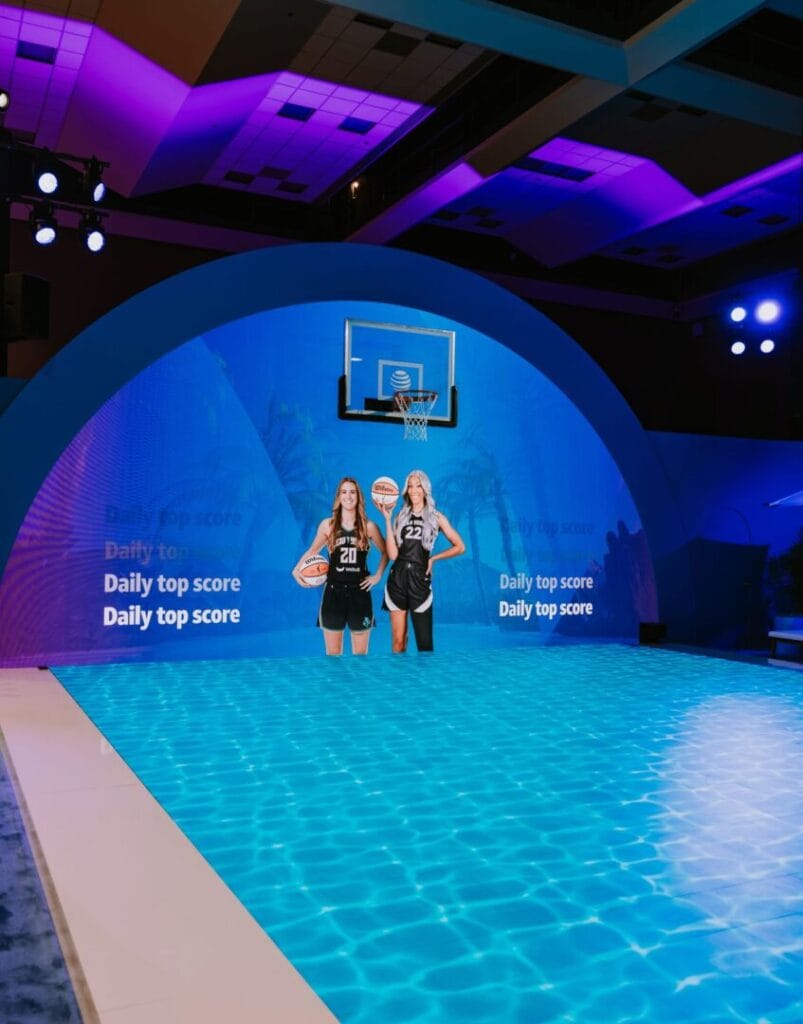Women’s sports have seen a remarkable surge in popularity, but with this growth comes the need to sustain and expand audience engagement. This presents a unique and exciting opportunity to captivate fans of all ages, from young girls just discovering their passions to seasoned sports enthusiasts. Let’s explore how technology is transforming audience engagement in women’s sports and creating more inclusive, dynamic experiences.
Social Media: Instant Connectivity
Social media platforms have catapulted fans interactions with sports in a new way. These platforms provide a vital space for visibility and community building with live streams, highlight reels, and interactive content. This means sports organizations can reach diverse age groups.
- For Younger Audiences: Platforms like TikTok and Instagram are ideal for engaging younger fans with short, vibrant content that resonates with their fast-paced consumption habits. Creating challenges, behind-the-scenes footage, and player interactions can spark their interest and build loyalty.
- Other Audience Suggestions: Facebook, LinkedIn and Twitter cater to more mature audiences, offering them in-depth analysis, discussions, and community engagement. Leveraging these platforms for live Q&A sessions with athletes or exclusive content can help build a loyal following.
Virtual and Augmented Reality: Immersive Experiences for All Ages
Virtual Reality (VR) and Augmented Reality (AR) are redefining how fans experience and immerse themselves in sports. Bridge the gap between the game and the viewer and offer immersive experiences that appeal to all generations.
- Youth Fans: VR gaming experiences that allow young fans to “step into the shoes” of their favorite athletes can be a thrilling way to engage them. These experiences not only entertain but inspire the attendee to pursue sports themselves.
- General Audience Fans: AR features in mobile apps, such as virtual player stats or enhanced replays, provide fans with an interactive viewing experience, keeping them engaged with the sport beyond the traditional broadcast.
Personalized Content: Tailor the Experience
Personalization is key to engaging audiences across different age groups and audiences. By using data analytics, sports organizations can deliver tailored content that resonates with individual preferences, whether it’s favorite teams, players, or types of coverage.
- For All Ages: Customizable apps that allow users to choose what kind of content they receive—be it live game alerts, player interviews, or news updates—ensure that each fan’s experience is unique and relevant to them.
- Youth vs. Older Fans: Youth and young fans might prefer interactive polls, quizzes, and dynamic content, while older fans might appreciate more in-depth coverage, historical data, and analytical pieces.
Esports and Gaming: Bridging Traditional and Digital Sports
The world of esports and gaming is creating new opportunities to engage fans of women’s sports, particularly among younger audiences who are already immersed in the digital world.
- Youth Audiences: Integrating esports tournaments featuring women athletes or sports-based video games can draw younger fans who might not yet be engaged with traditional sports.
- Broad Audience Considerations: Esports streams or gaming events featuring nostalgic or classic games can attract wide groups of fans, offering them a bridge between traditional sports and modern digital experiences.
Community Building: Connecting Fans Beyond the Game
Technology has made it easier than ever to build communities around women’s sports. By fostering a sense of belonging, sports organizations can create lasting engagement that transcends age barriers.
- Cross-Generational Engagement: Online forums, fan clubs, and social media groups where fans of all ages can share their love for the sport help in creating a cross-generational dialogue. Virtual meet-and-greets or fan events can also strengthen these connections.
- Inclusion of All Ages: Events and campaigns that encourage participation from fans of all ages, such as family-oriented sports challenges or mother-daughter fan experiences, help in building a lifelong bond with the sport.
Conclusion
As technology continues to evolve, the potential to engage audiences across all ages in women’s sports is boundless. By leveraging social media, VR/AR, personalized content, esports, and community-building platforms, sports organizations can create a vibrant, inclusive environment where fans of all ages feel connected and inspired. The future of women’s sports is not just in the game but in the experiences crafted around it, bringing together generations of fans through the power of technology.
Engaging diverse age groups is more than a strategy—it’s about creating lasting memories and a shared passion for women’s sports that will be cherished for years to come!












